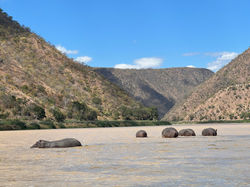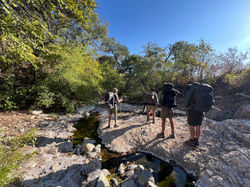
EXPEDITION WILD

Matusadona National Park, Zimbabwe
Zambezi Valley
Expedition Basics:
7 Nights, walking expedition exploring Matusadona National Park.
Our Destination:
Matusadona National Park is around 140 000ha and with the adjoining community conservation areas and a large section of the lake surface the total protected area is almost 400 000ha which is managed by African Parks and headed up by Mike Pelham who is responsible for park operations including law enforcement for illegal fishing, poaching, illegal mining etc. Its a big job but we where hugely impressed by what Mike and African Parks have achieved in only a few years, Mike and his wife Tracey are both dedicated first class humans making a difference, watch this space because Matus is back on the map!
Day 1:
We arrived mid day in Matusadona after an early start in Joburg where we caught the first flight out to Harare then our connecting flight into the reserve. As you head north from Harare the relatively flat interior meets the Matusadona range which make up almost two thirds of the park, before you drop down into the Zambezi valley and onto the lake shore of Kariba. We spent the first night in Tshinga Camp the headquarters for the park and where we would be meeting up with Mike for another fun filled adventure together.

 |  |  |
|---|---|---|
 |  |  |
 |  |
Day 2
8km
From Tashinga main camp we headed across the park to Changa Camp where we got a motor boat up the Sanyanti River Gorge, that forms the eastern boundary of the park. After few km up the gorge we came to the confluence of the Jekecha River Valley where we would begin our 60km walk across the park. The confluence was made up of a large sand bank jutting into the Sanyanti, and on arrival we where met by one if the largest aggregation of large crocs I have ever seen, we counted approx 27 large beasts! on the sand bank with a large pod of hippos who graciously made way for our boat to land!
From there we headed up the Jekecha valley covering around 8km that day. We saw a few bull elephants, and a number of klipspringer before we finally making camp on a sandy bank
Day 3
12km
After a cold night on the sand bank, we were up early, packed up camp and headed deeper into the valley. With the steep sided valley it meant the sun would only reach over the valley ridge well into the winter morning, but the days were pleasant, warm in the sun but got cold in the shade.
This area of the park is well above the valley floor, not only cooler but the vegetation is very different, largely dominating by Miombo woodland. We cut a trail along the Jekecha river bed, following elephant paths in and out of the now dry river bed. The lower 12km section we had already traversed was very rocky, with large and small rocks predominating but further up the river levels out with longer sandy sections.
The mountains where full of leopard and civet tracks, and of coarse lots of elephant tracks, we also saw Augar Buzzard, African Hawk Eagle but our main interest was the trees in this unique part if the park.
 |  |  |
|---|---|---|
 |  |  |
 |  |  |
 |  |
Day 4
17km
We spent the night in the cool river bed near a well used water point, during the evening we experienced a heavy due that clung to all our gear and sleeping bags making for a cold wet start to the day.
Water had become increasingly scarce as we headed up into the highland area, the large pools became more infrequent but a number springs presented a welcome relief. We had now covered the majority of the Jekecha river and now in the upper reached we crossed over the watershed divide onto Shushuma River Course that forms part of the Umi River the western boarder of the park. We would stay on the Shushuma as it guided us out the mountains and onto the valley floor. The days highlight was spending lunch around a well used spring, gushing fresh spring water from the ground. We had an opportunity to bath, clean some cloths and relax as it had been heavy going in the mountains
 |  |  |
|---|---|---|
 |  |  |
 |  |  |
 |  |  |
Day 5/6/7
We spent our last night in the mountains before descending down onto the valley floor, the next few days we would spend traversing the many river systems that drain out of the escarpment across the valley floor and into Lake Kariba. Matusadona is home to a number of natural springs, born out of the mountains, that are not immediately obvious form the road system which tends to traverse the high ground but on foot we where able to access the these remote parts of the valley floor.
We traversed the Shenga and Marong River systems both with strong springs especially the Maronga where there was significant water, with perminate pools that we were able to do some fly fishing. These perminate springs are home to a variety of fish from Labeo (yellow fish), Robbers, Barbs, Tilapia and even the odd tiger fish which we could see in the clear pools but we where only able to catch a few Robbers, and a few trees!!.
All in all this was an amazing experience and what a privilege to walk with Mike Pelham on his home turf, we really got to see the other side of Matus that very few people have experienced. It would also be amiss not to commend African Park as they really are a new life line to so many parks across Africa, they do things properly and it gives me hope for the future of wildlife on the continent.
 |  |  |
|---|---|---|
 |  |  |
 |  |  |
 |  |  |
 |